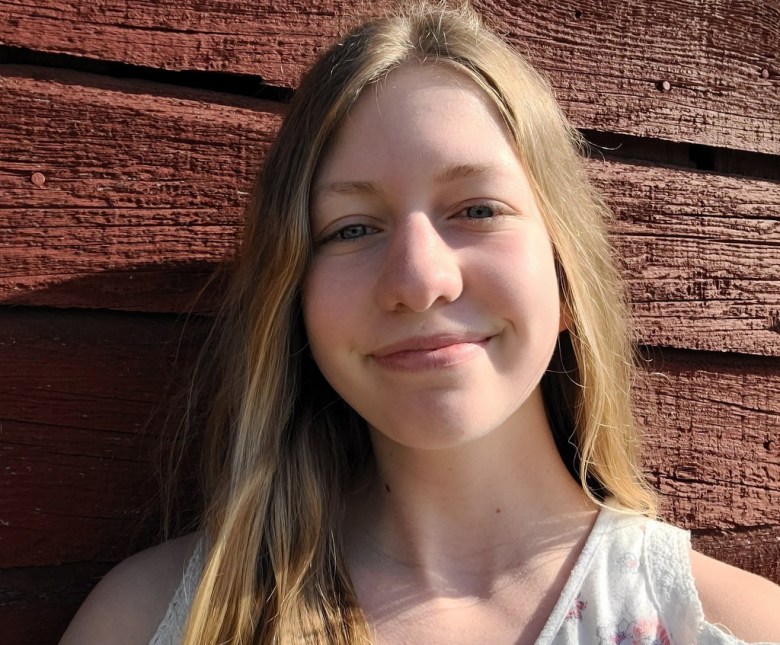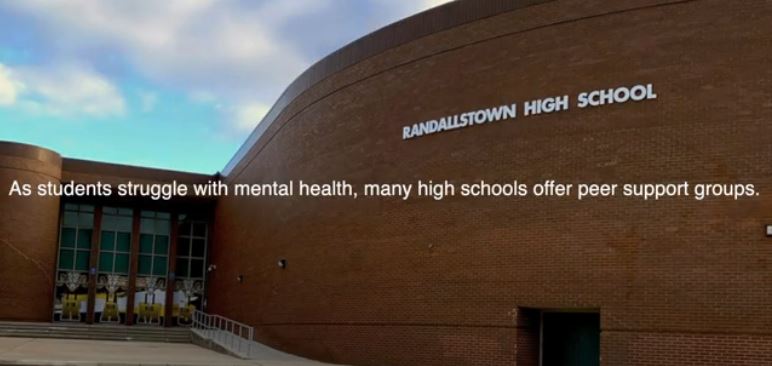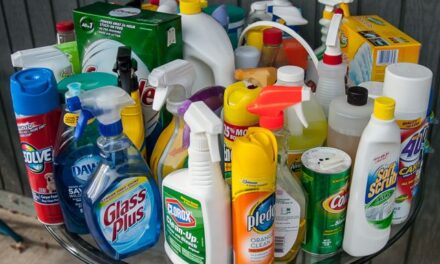By Olivia Fendrich and Radiah Jamil
Urban Health Media Project
Peer support groups such as Sources of Strength have served as a key part of mental health support for teens during the pandemic. Groups like Sources of Strength have chapters in Maryland and beyond, where the groups work to prevent teen suicide and identify students who may be at risk of mental health issues.
On a fall day outside Francis Scott Key High School in Carroll County, Md., a circle of chairs was arranged in the grass, where about 50 members of Sources of Strength took turns trading truths and seats. From the center of the circle, junior Sarah Myers introduced herself to the other students and told them: she’d hugged a cow.
She bolted to an open chair as other students who had also embraced the farm animal rushed to find a new seat. For those left standing, it was their turn to share a fact about themselves that other students might have in common. The ice-breaker helped Myers and other members of the peer support group bond before diving into more serious subjects — how to spread positive messaging beyond their club to other students struggling with mental illness.
Myers is among the students in Maryland and beyond who have participated in peer support groups to combat depression, anxiety and other mental health issues before the pandemic began and since it increased mental health needs among youth. As the COVID-19 pandemic stretched from weeks to months , students across the country reckoned with heightened mental health issues that stemmed from long-term isolation and uncertainty. More than 15% of U.S. youth ages 12-17 reported experiencing at least one major depressive episode in 2019-2020, according to a report from the nonprofit Mental Health America.

“I’ve seen my peers become really lonely, especially during the pandemic,” Myers said. “Although we had social media and Zoom and Skype and all those kinds of things, I think was really damaging. And I think that a lot of people felt alone in their situation in their home.”
Maryland ranks well for access to care for youth with mental health needs, according to the Mental Health America report. Peer support groups like Sources of Strength are one channel through which teens are finding assistance. The national group recruits students across grade levels and social circles, equips them with strategies for shoring up mental wellness and positions them to reach other students in need of support.
Supportive peer networks have become more crucial as schools have experienced counselor shortages, and some counselors have been stretched to perform duties beyond supporting students’ mental wellness. The American School Counselor Association recommends a counselor-to-student ratio of 250-to-one; in Maryland that ratio was 356-to-one during the 2019-2020 school year.
Although groups like Sources of Strength cannot replace the support students receive from professional counselors, they can help fill gaps.
“I have a lot of people who trust me, which I’m very thankful for,” said Myers, who joined Sources of Strength as a freshman. “I’ve been able to sit down with some of my peers and just listen to their situation, listen to what they’re going through. And so I often find myself thinking, like, ‘Oh, this is a way that you can think. Do your parents support you? Can you talk to them about this? What about your friends?’”
Peer support groups give struggling individuals the opportunity to connect with others who may be experiencing similar difficulties, as opposed to a one-on-one conversation with a counselor.
“It becomes more real for students who maybe are struggling, knowing that there’s somebody else who’s kind of in the same boat with them,” Jennifer Stine, a school counselor at Randallstown High School in Baltimore County, Md., said. “They can relate a lot better when it’s peer-to-peer than when it’s a counselor to a student.”

In group counseling settings, support from peers builds camaraderie and creates an environment that encourages group members to open up about their personal struggles, Stine said.
“Everybody else sits there and says, ‘Wow, I thought it was the only one but I’m not and I can relate,’” she said.
Over 25% of students reported worsened mental states after the pandemic began, according to a report by the Kaiser Family Foundation (KFF). And nearly three-quarters of U.S. parents reported COVID-19 had a negative impact on their teens’ ability to interact with friends, a poll by the C.S. Mott Children’s Hospital at the University of Michigan found.
“We have a lot of students coming to us who have a lot of challenges that they have gained from the COVID experience — whether it’s their own personal depression that they have been battling with themselves, or just being at home with all the family members that they have had some struggles with,” Stine said.
Young people with intersectional identities are further at risk for mental health complications. About two-thirds of LGBTQ high school students reported persistent feelings of sadness and hopelessness, and 47% reported serious thoughts of suicide in 2019, KFF reported. The mental health of LGBTQ youth deteriorated as the pandemic raged in fall 2020, when anxiety, depressive disorder and thoughts of suicide were even more prevalent among this group, the KFF survey found.
“Whether it’s your gender, race, whether it’s your LGBTQ status — it’s definitely these things isolate you further from support groups and systems,” said Tinisha Parker, recent past chair of the American School Counselor Association.
With programs in more than 2,000 schools nationwide, Sources of Strength teaches holistic wellness strategies to prevent suicide, substance abuse and violence. The organization trains teens to cultivate strengths across eighth categories including mental and physical health, family relationships, positive friendships and generosity.
“We’ve been aware of struggles before,” Myers said. “But now with even more depression or anxiety or loneliness, I’d say it’s also been geared towards making people know they’re not alone and that they have peers that they can go to and talk about this. They have teachers that they can go to, their counselors.”
While peer support groups are not a replacement for formal counseling, therapy or other treatment, they can supplement professional mental health support.
“They go hand-in-hand,” Stine said. “They’re both so very important to the support of our students.”
But Parker cautioned there are instances in which students supporting peers should seek help from adults and mental health professionals, such as if another student expresses thoughts of suicide.
“If you are on the receiving end of that information, we implore you to get a hold of an adult and share, even if that means breaking a pinky promise,” said Parker, executive director of the Department for Student Services for Gwinnett County Public Schools in Georgia.
During the pandemic, the Sources of Strength club at Francis Scott Key High School held a few virtual meetings. But now that in-person learning has returned, Myers and her fellow peer supporters are working to increase the group’s visibility and do more outreach to the student body.
“Lately we’ve been gearing it towards coming out of the pandemic and just finding ways to get back to normal or back to better than we were before,” Myers said. “It has been very important in reminding people, especially those who have been struggling through this time, to look to positive things.”
Fendrich and Jamil are high school students at Littleton High School in Littleton, Co., and The Brooklyn Latin School in Brooklyn, NY. They were participants in Urban Health Media Project’s reporting workshop on student mental health in Fall of 2021. UHMP student reporters Nygel Bross and Malaya Mason contributed to this story.
Help us Continue to tell OUR Story and join the AFRO family as a member – subscribers are now members! Join here!
The post Peer support groups bolster teen mental wellness in Maryland high schools appeared first on AFRO American Newspapers .










